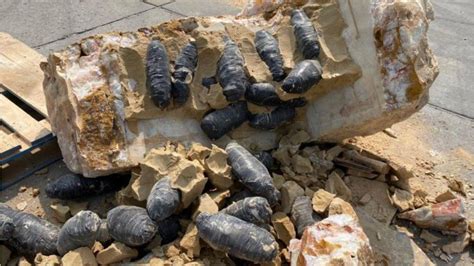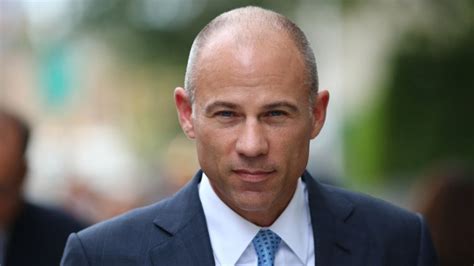
A man attempting to cross the U.S.-Mexico border was apprehended by U.S. Customs and Border Protection (CBP) officers after they discovered live birds concealed inside his pants. The incident occurred at the San Ysidro Port of Entry in California, raising concerns about wildlife smuggling and potential biosecurity risks.
SAN YSIDRO, CA – U.S. Customs and Border Protection (CBP) officers at the San Ysidro Port of Entry made an unusual discovery when they encountered a man attempting to smuggle live birds into the United States. The incident, which occurred recently, has sparked concerns about wildlife trafficking and the potential introduction of diseases into the country.
According to a CBP statement, officers noticed “unusual bulges” in the man’s pants during a routine inspection. Upon further investigation, they discovered that the bulges were caused by several live birds hidden inside his clothing. The exact number of birds found was not initially disclosed, but authorities confirmed that the birds were alive and appeared to be in distress.
“CBP officers are highly trained in identifying anomalies and potential smuggling attempts,” said Sidney Aki, CBP Director of Field Operations in San Diego. “This is a clear example of their expertise and dedication to protecting our nation’s resources.”
The man, whose identity has not been released, was taken into custody and is facing potential charges related to wildlife smuggling. The birds were seized and are currently being held in quarantine, where they will be examined by veterinarians and wildlife specialists.
This incident highlights the ongoing challenges faced by CBP in preventing the illegal trafficking of animals and other wildlife products across the border. Wildlife smuggling poses a significant threat to biodiversity and can also introduce diseases that could harm native species and human health.
The investigation is ongoing, and further details are expected to be released as the case develops.
Increased Scrutiny and Inspection
The discovery was made during what CBP described as a routine inspection at the San Ysidro Port of Entry, one of the busiest land border crossings in the world. The port processes thousands of vehicles and pedestrians daily, making it a prime location for smuggling attempts.
CBP officers are trained to identify suspicious behavior and anomalies that may indicate illegal activity. In this case, officers noticed “unusual bulges” in the man’s pants, which prompted further investigation. This observation led to the discovery of the live birds concealed inside his clothing.
The increased scrutiny at border crossings is part of a broader effort by CBP to combat all forms of smuggling, including narcotics, weapons, and wildlife. The agency utilizes a variety of tools and techniques to detect illegal activity, including advanced imaging technology, canine units, and intelligence gathering.
Wildlife Smuggling: A Growing Concern
Wildlife smuggling is a global problem that poses a significant threat to biodiversity and conservation efforts. The illegal trade in animals and plants is estimated to be worth billions of dollars annually, and it is driven by demand for exotic pets, traditional medicines, and luxury goods.
The United States is a major market for illegally trafficked wildlife, and CBP plays a critical role in preventing these products from entering the country. The agency works closely with other federal agencies, such as the U.S. Fish and Wildlife Service, to enforce wildlife protection laws and regulations.
Smuggling live animals, as in this case, is particularly concerning because it can introduce invasive species and diseases that could harm native wildlife and ecosystems. It also raises ethical concerns about the welfare of the animals involved, which are often subjected to cruel and inhumane treatment during transport.
Potential Health Risks
The smuggling of live birds also raises concerns about potential health risks to humans. Birds can carry a variety of diseases that can be transmitted to humans, including avian influenza (bird flu), West Nile virus, and psittacosis (parrot fever).
These diseases can cause serious illness and even death in humans, and the introduction of a new disease into the country could have significant public health consequences.
CBP works closely with the Centers for Disease Control and Prevention (CDC) to monitor and prevent the entry of diseases into the United States. When live animals are seized at the border, they are typically quarantined and examined by veterinarians to ensure that they are not carrying any diseases that could pose a risk to public health.
Legal Consequences
The man who was caught smuggling the birds faces potential criminal charges under U.S. wildlife protection laws. The Lacey Act, for example, prohibits the import, export, sale, or purchase of illegally taken wildlife. Violators of the Lacey Act can face significant fines and imprisonment.
In addition to criminal charges, the man could also face civil penalties for violating CBP regulations. These penalties can include fines and the seizure of any vehicles or other property used in the smuggling attempt.
The U.S. government takes wildlife smuggling very seriously, and those who are caught engaging in this activity can expect to face significant consequences.
The Fate of the Birds
The live birds that were seized by CBP are currently being held in quarantine. During this time, they will be examined by veterinarians to determine their species, health status, and origin.
The birds may also be tested for diseases that could pose a risk to humans or other animals.
Once the quarantine period is over, the birds will be turned over to the U.S. Fish and Wildlife Service, which will determine their ultimate disposition. Depending on the circumstances, the birds may be released back into the wild, placed in a sanctuary or zoo, or euthanized.
The decision on what to do with the birds will be based on a variety of factors, including their species, health, and the potential for them to survive in the wild.
Ongoing Efforts to Combat Wildlife Smuggling
The incident at the San Ysidro Port of Entry is a reminder of the ongoing challenges faced by CBP and other agencies in combating wildlife smuggling. The illegal trade in animals and plants is a complex and multifaceted problem that requires a coordinated effort to address.
CBP works closely with other federal agencies, international organizations, and non-governmental organizations to combat wildlife smuggling. These efforts include:
- Increasing inspections at border crossings
- Using advanced technology to detect illegal activity
- Training officers to identify suspicious behavior
- Working with other countries to share information and coordinate enforcement efforts
- Raising public awareness about the dangers of wildlife smuggling
By working together, these organizations can help to protect wildlife and prevent the introduction of invasive species and diseases into the United States.
Expert Opinions and Analysis
Wildlife experts and conservationists have expressed concern about the recent incident at the San Ysidro Port of Entry. They argue that wildlife smuggling poses a significant threat to biodiversity and can have devastating consequences for ecosystems.
“Wildlife smuggling is a serious crime that can have far-reaching consequences,” said Dr. Emily Carter, a wildlife biologist at the University of California, San Diego. “It not only harms the animals involved, but it can also disrupt ecosystems and introduce diseases that can affect human health.”
Dr. Carter added that the incident highlights the need for increased vigilance at border crossings and for stronger enforcement of wildlife protection laws.
“We need to do everything we can to stop wildlife smuggling,” she said. “It is a threat to our planet’s biodiversity and to our own well-being.”
Other experts have emphasized the importance of educating the public about the dangers of wildlife smuggling. They argue that many people are unaware of the impact that their purchases can have on wildlife populations.
“Many people don’t realize that when they buy an exotic pet or a traditional medicine, they may be contributing to wildlife smuggling,” said Sarah Johnson, a conservation advocate at the World Wildlife Fund. “We need to raise awareness about this issue and encourage people to make responsible choices.”
The Broader Context of Border Security
The incident involving the smuggled birds occurs within the broader context of heightened border security measures. Increased enforcement at the U.S.-Mexico border has been a topic of political debate for years, with proponents arguing that it is necessary to prevent illegal immigration, drug trafficking, and other criminal activities.
Opponents, however, argue that increased border security can have negative consequences for border communities and can lead to human rights abuses. They also argue that it is not an effective way to address the root causes of migration and crime.
The incident involving the smuggled birds highlights the complex challenges of border security and the need for a comprehensive approach that addresses both security concerns and humanitarian considerations.
The Role of Technology
Technology plays an increasingly important role in border security efforts. CBP utilizes a variety of advanced technologies to detect illegal activity, including:
- X-ray and gamma-ray imaging systems that can detect hidden objects inside vehicles and cargo containers
- Facial recognition technology that can identify individuals who are wanted by law enforcement
- Unmanned aerial vehicles (drones) that can patrol remote areas of the border
- Sensors that can detect underground tunnels and other hidden pathways
These technologies can help CBP to identify potential smuggling attempts and to prevent the entry of illegal goods and people into the United States. However, they also raise concerns about privacy and civil liberties.
International Cooperation
Combating wildlife smuggling requires international cooperation. The illegal trade in animals and plants is a global problem that transcends national borders.
The United States works closely with other countries to share information, coordinate enforcement efforts, and provide assistance to developing countries that are struggling to combat wildlife smuggling.
International agreements, such as the Convention on International Trade in Endangered Species of Wild Fauna and Flora (CITES), provide a framework for international cooperation on wildlife protection.
The Impact on Local Communities
Border security measures can have a significant impact on local communities. Increased enforcement can disrupt trade and travel, and it can create a climate of fear and distrust.
Border communities often rely on cross-border trade and tourism for their economic livelihoods. When border security measures are tightened, these activities can be curtailed, leading to economic hardship.
It is important to consider the impact of border security measures on local communities and to ensure that these measures are implemented in a way that minimizes disruption and promotes economic development.
The Future of Border Security
The future of border security is likely to be shaped by a number of factors, including technological advancements, political developments, and economic trends.
As technology continues to evolve, CBP will likely adopt new and innovative tools to detect illegal activity. These technologies will likely be more sophisticated and more effective than those that are currently in use.
Political developments, such as changes in immigration policy and trade agreements, could also have a significant impact on border security.
Economic trends, such as the growth of international trade and the increasing demand for exotic goods, could also affect the nature and scope of border security challenges.
The Importance of Public Awareness
Public awareness is essential for combating wildlife smuggling. Many people are unaware of the impact that their purchases can have on wildlife populations.
By educating the public about the dangers of wildlife smuggling, we can encourage people to make responsible choices and to support efforts to protect wildlife.
Public awareness campaigns can be conducted through a variety of channels, including social media, television, radio, and print media. These campaigns can highlight the impact of wildlife smuggling on biodiversity, human health, and economic development.
The Role of Non-Governmental Organizations
Non-governmental organizations (NGOs) play a vital role in combating wildlife smuggling. These organizations work to protect wildlife, to raise public awareness, and to advocate for stronger enforcement of wildlife protection laws.
NGOs often work in partnership with government agencies and international organizations to combat wildlife smuggling. They can provide expertise, resources, and on-the-ground support for enforcement efforts.
Conclusion
The discovery of live birds hidden in a man’s pants at the San Ysidro Port of Entry is a stark reminder of the ongoing challenges faced in combating wildlife smuggling. This incident underscores the need for continued vigilance, enhanced enforcement, and international cooperation to protect biodiversity and prevent the introduction of invasive species and diseases. The integration of advanced technology, coupled with public awareness campaigns, remains crucial in addressing this complex global issue and ensuring the well-being of both wildlife and human populations. The incident serves as a microcosm of the larger issues surrounding border security, highlighting the delicate balance between enforcing laws, protecting natural resources, and respecting human rights. Moving forward, a holistic approach that incorporates these elements is essential for effective and sustainable border management. The fate of the seized birds, the legal repercussions for the smuggler, and the broader implications for wildlife conservation all contribute to a narrative that demands attention and proactive solutions.
Frequently Asked Questions (FAQ)
1. What exactly happened at the San Ysidro Port of Entry?
At the San Ysidro Port of Entry, U.S. Customs and Border Protection (CBP) officers discovered a man attempting to smuggle live birds into the United States. The birds were concealed inside his pants. CBP officers noticed “unusual bulges” in the man’s pants during a routine inspection. Upon further investigation, they discovered that the bulges were caused by several live birds hidden inside his clothing.
2. Why is wildlife smuggling a serious issue?
Wildlife smuggling poses a significant threat to biodiversity, introduces invasive species and diseases, and can have devastating consequences for ecosystems and human health. The illegal trade in animals and plants is estimated to be worth billions of dollars annually, driving demand for exotic pets, traditional medicines, and luxury goods, often at the expense of animal welfare and ecological balance.
3. What are the potential health risks associated with smuggling live birds?
Smuggling live birds can introduce diseases that can be transmitted to humans, such as avian influenza (bird flu), West Nile virus, and psittacosis (parrot fever). These diseases can cause serious illness and even death in humans, posing significant public health risks.
4. What legal consequences does the man face for smuggling the birds?
The man faces potential criminal charges under U.S. wildlife protection laws, such as the Lacey Act, which prohibits the import, export, sale, or purchase of illegally taken wildlife. Violators can face significant fines and imprisonment. He may also face civil penalties for violating CBP regulations, including fines and the seizure of any vehicles or property used in the smuggling attempt.
5. What will happen to the seized birds?
The seized birds are currently being held in quarantine, where they will be examined by veterinarians to determine their species, health status, and origin. They may also be tested for diseases. After the quarantine period, the U.S. Fish and Wildlife Service will determine their disposition, which may include release back into the wild, placement in a sanctuary or zoo, or, in some cases, euthanasia, depending on the birds’ health and the potential for survival.









